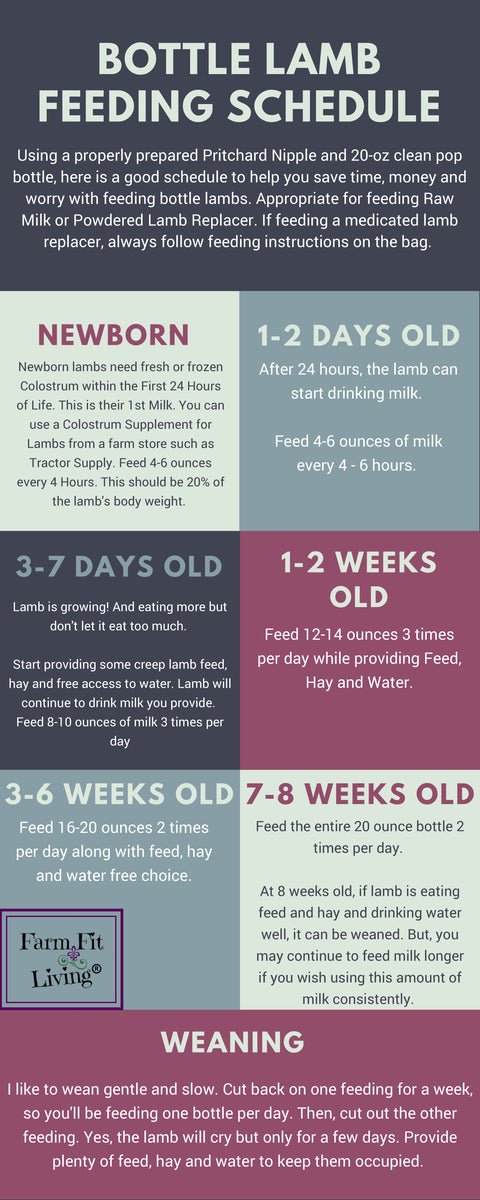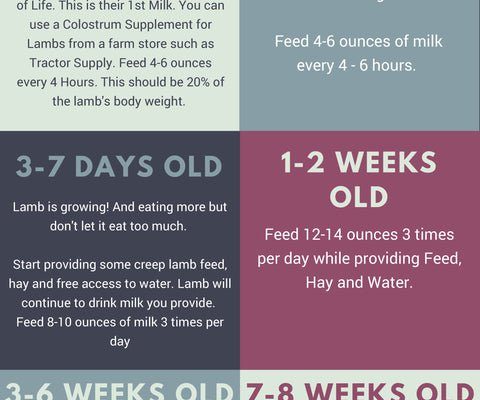
Let’s be honest: bottle-feeding lambs isn’t just pouring milk into a bottle and handing it over. There’s a bit more to it than that! In this guide, we’ll walk through everything you need—from the essential supplies to creating a feeding schedule that works for both you and your lamb. Just picture yourself sitting outside with a cozy bottle in hand, the sun shining down, and a happy little lamb eagerly lapping up the milk. Sounds delightful, right?
Essential Supplies for Bottle-Feeding Lambs
When it comes to feeding orphan lambs, having the right supplies is crucial. You wouldn’t want to send a kid to school without their backpack, right? Here’s a list of what you’ll need to get started:
- Milk Replacement Formula: This is specifically designed for lambs and provides the right nutrients. Look for a high-quality brand like Land O’Lakes or Milk Replacer 2.
- Feeding Bottles: Get a few sturdy bottles with nipples. Make sure they’re designed for lambs, as they’re easier for tiny mouths to latch onto.
- Cleaning Supplies: You’ll need brushes and soapy water to keep everything clean and avoid any health issues.
- Heating Pads: Lambs can be quite delicate, especially when they’re newly born. A heating pad can help keep them warm for those chilly nights.
- Scale: A small scale is handy to ensure your lamb is gaining weight as it should.
With these supplies, you’re off to a solid start. Ensuring you have everything prepared will help reduce any stress for both you and your lamb.
Preparing the Milk Formula
Now that you have your supplies, let’s talk about the most crucial element: the milk formula. Lambs need a specific type of milk replacement, as regular cow’s milk can upset their stomachs.
Start by mixing the milk replacer according to the instructions on the package. It’s important to use warm water—around 100°F is ideal, mimicking the body temperature of a mother sheep’s milk. Think of it as preparing a warm bath for a baby. Once mixed, shake it gently to avoid creating too many bubbles.
Before offering the bottle, test the temperature by dripping a little on your wrist. It should feel warm, not hot. Imagine how uncomfortable it would be to sip something scalding hot—the same goes for your lamb! Once everything checks out, you’re ready to feed.
Feeding Schedule for Orphan Lambs
Creating a feeding schedule is essential for the well-being of your lamb. Newborn lambs typically need to be fed every 2-4 hours. Here’s a simple schedule to consider:
- Newborn (0-1 week): 2-3 ounces of milk every 2-3 hours.
- 1-3 weeks: 4-6 ounces of milk every 3-4 hours.
- 3-6 weeks: 8-12 ounces of milk every 4-6 hours.
You might be wondering how many total feedings that adds up to in a day. For newborns, that could mean up to 8 feedings! Yes, this might seem a bit overwhelming at first, but keeping the little one happy and healthy is worth it.
As your lamb grows, gradually reduce the frequency of feedings and increase the amount of milk offered at each feeding. They’ll start making more mess and less milk, so don’t stress if you notice that transition!
How to Feed Your Lamb Properly
Feeding the lamb might seem simple, but there are some tips to make it a successful experience for both you and your little one. First, find a quiet spot where your lamb feels safe. Hold the bottle at an angle that allows them to suck comfortably.
You might find your lamb being a bit curious or even shy initially. If they seem hesitant, gently place the nipple in their mouth and encourage them to suckle. Just take it slow and be patient—like teaching a toddler to ride a bike, it might take a little time before they get the hang of it.
Watch for signs that your lamb is getting full. If they start looking away or refuse to suck, it’s time to stop the feeding. Overfeeding can lead to digestive issues, and nobody wants that!
Health and Monitoring of Your Lamb
Regular check-ups are vital to ensure your lamb is thriving. Weigh them daily during the first few weeks, and keep track of their weight on a chart. A healthy lamb should gain around 1/2 to 1 pound per day. If the weight stalls or decreases, seek veterinary advice.
Also, keep an eye on their behavior. A happy lamb will be alert, with bright eyes and a playful spirit. If your lamb seems lethargic, refuses to feed, or shows signs of illness, don’t hesitate to consult a veterinarian. Early intervention can make all the difference.
Transitioning to Solid Food
After about 4-6 weeks, it’s time to start thinking about transitioning your lamb to solid food. Lambs are curious creatures and often take to new foods quickly. Begin by introducing high-quality lamb starter pellets and hay. They’ll appreciate the variety!
Start offering these foods alongside their bottle feedings. Expect some playful mess and excitement as they explore solid food for the first time. Gradually reduce bottle feedings as they eat more solids, but do so slowly—remember, just like humans, lambs also need time to adapt.
Taking care of orphan lambs can be incredibly rewarding. Yes, it requires effort, but the joy of seeing them grow strong and playful makes it all worth it. With the right supplies, a solid feeding schedule, and a little patience, you can provide the care these adorable bundles of joy need.
So grab that bottle, mix that milk, and get ready for delightful moments with your new furry friend. You’re stepping into the role of a caretaker, and honestly, there’s just nothing like it!

